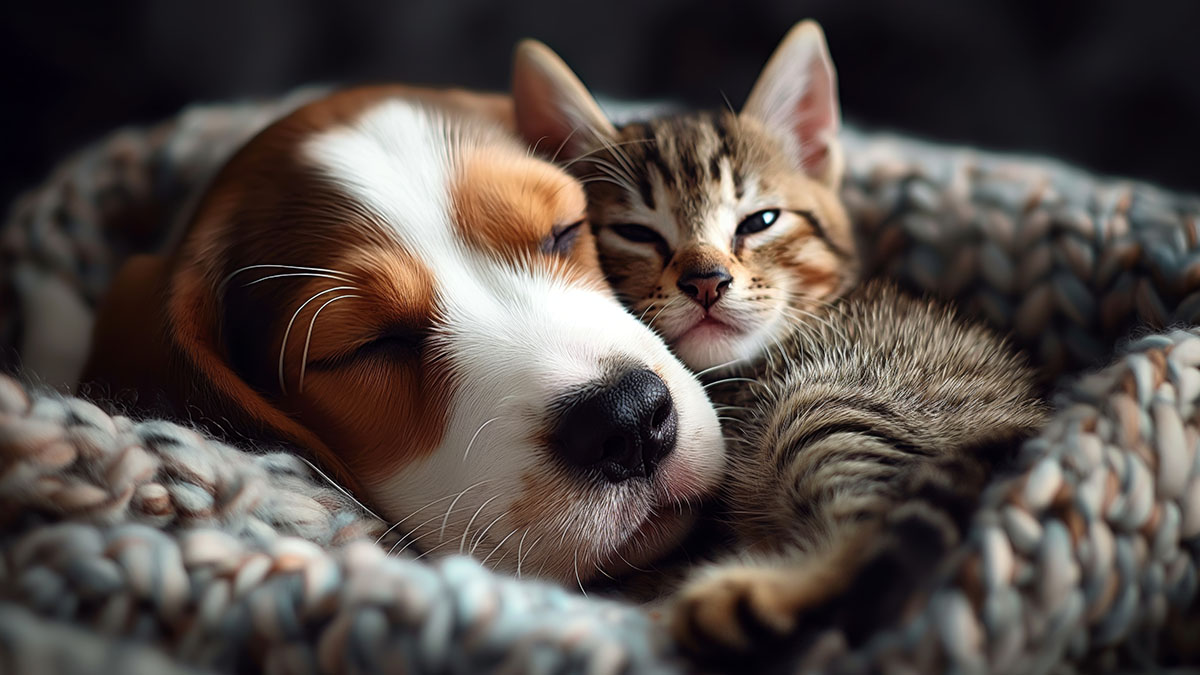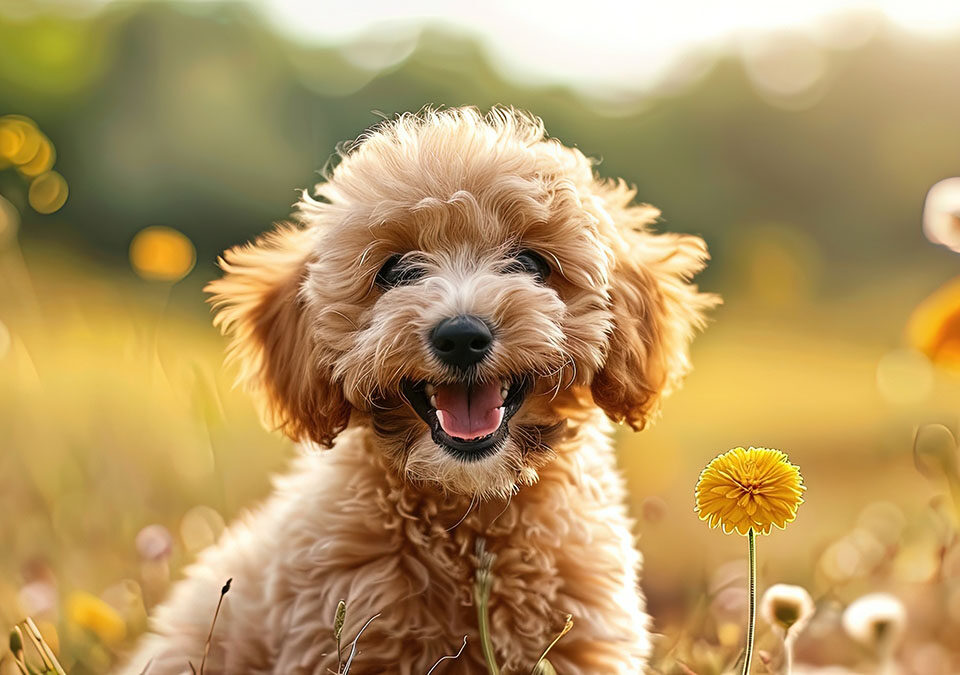
The Top 10 Hypoallergenic Small Dog Breeds You’ll Love
September 12, 2024Introducing a new cat into a home with dogs can be a nerve-wracking experience for both pets and owners. However, there are certain cat breeds that are known for their friendly and sociable nature, making them the perfect companions for canines. In this article, we will explore multiple breeds that have a remarkable ability to get along with each other, creating a harmonious environment in your home.
From the adventurous Abyssinian to the elegant Ragdoll, these cat breeds possess qualities that make them more inclined to form positive relationships with their canine counterparts. We will delve into their temperament, socialization needs, and overall compatibility with dogs, providing valuable insights for pet owners who are considering adding a feline friend to their household.
Navigating the dynamic between dogs and cats may initially seem challenging, but with the right cat breed, it can be a rewarding and heartwarming experience for everyone involved. Whether you have a playful pup or a gentle giant, these cat breeds will prove that dogs and cats can indeed live in perfect harmony.
Join us as we explore the fascinating world of cat breeds that are known for their affinity for canines, and discover the ideal feline companion to complete your pet family.
Factors that contribute to dogs and cats getting along
The relationship between dogs and cats can be influenced by various factors, including their individual personalities, early socialization, and the environment in which they are raised. Understanding these components is crucial for pet owners looking to create a harmonious household. A dog’s temperament plays a significant role; breeds that are naturally friendly and sociable tend to adapt better to living with cats. Similarly, cats who are confident and less skittish are more likely to engage positively with their canine counterparts.
Another critical factor is early socialization. Animals that have been exposed to various species during their formative months are generally more adaptable. A dog that has been raised with cats will likely view them as part of their pack, while a cat that has had positive interactions with dogs may be less fearful. Owners can facilitate this by introducing pets gradually, allowing them to acclimate to each other’s presence while ensuring that the experience is positive.
The environment also plays a pivotal role in fostering a peaceful coexistence. A spacious home with separate areas for each pet can help reduce territorial disputes, allowing them to feel secure in their own space. Positive reinforcement techniques, such as rewarding desired behaviors, can further encourage friendly interactions between pets. In essence, a well-balanced combination of temperament, socialization, and environment can significantly enhance the likelihood of dogs and cats living together harmoniously.
Understanding cat breeds that are known to get along with dogs
Several cat breeds exhibit friendly and sociable characteristics, making them more compatible with dogs. When considering adding a feline companion to a household with dogs, it’s essential to choose the right breed. Some cats are naturally more adaptable and tolerant, which can ease the integration process. Factors like temperament, energy levels, and social needs play a crucial role in determining compatibility.
For instance, breeds like the Maine Coon and Ragdoll are known for their dog-like behaviors and gentle nature. These cats are often more willing to engage with their canine siblings, offering companionship rather than confrontation. Another breed worth mentioning is the Siamese, known for their social and intelligent traits. Their outgoing nature allows them to bond easily with dogs, creating a balanced dynamic in the household.
Ultimately, understanding the specific traits of various cat breeds can assist pet owners in making informed decisions. It’s essential to consider not just the breed but also the individual personality of each pet. While some cats may defy breed stereotypes, selecting a sociable breed increases the chances of establishing a fun and loving multi-pet environment.
Labrador Retriever – a dog-friendly breed that gets along well with cats
Labrador Retrievers are renowned for their friendly and approachable demeanor, making them one of the best dog breeds for coexistence with cats. Their playful nature and high energy levels often lead them to seek companionship from other pets, including felines. Labradors are typically very tolerant, which can help alleviate any initial tensions that may arise when introducing a new cat into the home.
These dogs are also known for their intelligence and trainability. By employing positive reinforcement techniques, owners can teach their Labs to interact appropriately with their feline friends. For example, teaching commands like “gentle” can help ensure that the dog approaches the cat calmly, reducing any chances of aggressive play. This level of training not only enhances the relationship between the dog and cat but also promotes a sense of safety for both pets.
Additionally, the playful nature of Labrador Retrievers can lead to engaging interactions with cats. Many Labs enjoy playtime and can even adapt their play styles to accommodate their feline companions. Whether it’s chasing after a toy or simply lounging together, the bond formed between a Lab and a cat can be both joyful and heartwarming. Therefore, if you’re looking to introduce a cat into a home with a Labrador, you can expect a loving and dynamic relationship to blossom.
Golden Retriever – a gentle and tolerant breed that can coexist with cats
Golden Retrievers share many of the same traits that make Labradors great companions for cats. Known for their gentle temperament and friendly disposition, Golden Retrievers tend to be highly sociable and adaptable. They often approach new situations, including meeting cats, with curiosity and a non-threatening attitude, which can significantly ease the introduction process.
The intelligence of Golden Retrievers also plays a vital role in their ability to get along with cats. These dogs can be trained to recognize boundaries and understand appropriate behaviors around their feline friends. With consistent training and positive reinforcement, Golden Retrievers can learn to respect a cat’s space while still engaging in joyful play. This mutual understanding fosters a peaceful coexistence, reducing the likelihood of conflicts.
Moreover, Golden Retrievers are known for their loyalty and companionship. They thrive on social interactions, and having a cat as a companion can enrich their lives. Whether they are playing in the yard or relaxing together on the couch, the bond between a Golden Retriever and a cat can be incredibly fulfilling. For families looking to foster a harmonious pet environment, a Golden Retriever is a fantastic choice that often leads to lasting friendships between dogs and cats.
Beagle – a friendly and sociable breed that can form bonds with cats
Beagles are another breed that typically exhibits a friendly and social nature, making them great companions for cats. Their playful demeanor and inquisitive attitude allow them to interact positively with various pets, including felines. Beagles are generally good-natured and tend to enjoy the company of other animals, which can facilitate a smoother introduction to a new cat.
One of the defining characteristics of Beagles is their love for play. They are energetic dogs that thrive on interaction, and this enthusiasm can often extend to their relationships with cats. With proper supervision and guidance, Beagles can learn to engage in fun, non-aggressive play with their feline friends. This playful dynamic can lead to a strong bond, as both pets enjoy their time together.
However, it’s essential to monitor their interactions closely, especially during the initial stages. Beagles have a strong prey drive, which means they may instinctively chase smaller animals, including cats. Providing both pets with a safe environment and gradually allowing them to interact can help mitigate any potential issues. With patience and understanding, Beagles can form meaningful friendships with cats, creating a loving and lively household.
Maine Coon – a cat breed known for its dog-like behavior and adaptability
The Maine Coon is often referred to as the “gentle giant” of the cat world, and for good reason. This breed is known for its friendly disposition and dog-like behavior, making them uniquely suited for cohabitation with dogs. Maine Coons are typically social and enjoy the company of other pets, including dogs. Their adaptable nature allows them to navigate various social settings, often leading to harmonious relationships with canine companions.
One of the distinctive features of Maine Coons is their playful attitude. They enjoy engaging in interactive play, and their large size doesn’t diminish their agility. This playful nature can lead to enjoyable interactions with dogs, creating a lively and entertaining household. Additionally, Maine Coons are known for their intelligence, which allows them to learn from their canine counterparts and adapt their behaviors accordingly.
Furthermore, the Maine Coon’s gentle temperament makes them less likely to react aggressively to a dog’s presence. Instead, they often approach situations with curiosity and a willingness to engage. This breed thrives in environments where they can form bonds with other pets, fostering an enriching atmosphere for both dogs and cats. For families seeking a feline companion that will get along well with dogs, the Maine Coon is an excellent choice.
Ragdoll – a calm and docile cat breed that often gets along with dogs
Ragdolls are renowned for their calm and docile nature, making them one of the most amiable cat breeds when it comes to coexisting with dogs. This breed is often described as “dog-like” due to their affectionate and gentle temperament. Ragdolls are typically laid-back and tolerant, which can significantly ease the introduction process to a new canine companion. Their relaxed demeanor allows them to adapt well to various living situations, including homes with dogs.
Additionally, Ragdolls are known for their playful yet gentle interactions. They enjoy engaging in play but are less likely to exhibit aggressive or overly energetic behavior, making them a safe match for dogs. This characteristic allows for enjoyable interactions, whether it’s chasing after a toy or simply lounging together. Ragdolls often seek companionship, and having a dog around can provide them with the social interaction they crave.
Moreover, Ragdolls are incredibly affectionate and often form strong bonds with their human families and any other pets in the household. Their loving nature encourages a peaceful coexistence with dogs, as they are more likely to approach interactions with curiosity rather than fear. For those considering adding a cat to a dog-friendly home, Ragdolls offer a wonderful option that is likely to foster a loving and balanced environment.
Siamese – an intelligent and social cat breed that can live harmoniously with dogs
Siamese cats are well-known for their intelligence and sociable nature, making them a breed that can easily coexist with dogs. Their outgoing personality allows them to engage positively with various pets, including canines. Siamese cats are often described as vocal and expressive, which can help facilitate communication with their dog counterparts. This breed thrives on interaction and enjoys being part of the family dynamic, making them a delightful addition to homes with dogs.
Their intelligence plays a crucial role in their ability to adapt to living with dogs. Siamese cats are quick learners and can easily understand the behaviors and boundaries set by their canine friends. With proper socialization and training, Siamese cats can coexist harmoniously with dogs, often forming strong bonds. Their playful nature allows for engaging interactions, and they can often participate in games alongside their canine companions.
However, it’s essential to provide each pet with their own space and boundaries, as Siamese cats can be sensitive to overstimulation. By ensuring that both pets have areas where they can retreat, owners can cultivate a balanced environment. With the right approach, Siamese cats can thrive in multi-pet households, proving that dogs and cats can indeed live together in harmony.
Conclusion: Tips for introducing cats and dogs and fostering a peaceful coexistence
Introducing a cat into a home with dogs can be a rewarding experience, but it requires careful planning and consideration. To foster a peaceful coexistence, it’s essential to take gradual steps during the introduction process. Start by allowing both pets to become familiar with each other’s scents, perhaps by swapping bedding or toys. This helps to reduce anxiety and sets the stage for a smoother introduction.
When it’s time for the first face-to-face meeting, ensure that both pets are in a controlled environment. Using leashes for dogs and providing a safe space for the cat can help manage any initial excitement or anxiety. Observe their interactions closely and be prepared to intervene if necessary. Positive reinforcement, such as treats and praise for calm behavior, can encourage friendly interactions and build trust between the two pets.
Finally, patience is key. Every pet is unique, and the timeline for establishing a harmonious relationship can vary. Allow both animals to acclimate to each other at their own pace, and don’t rush the process. With time, understanding, and consistent training, dogs and cats can develop a loving and supportive bond, proving that they can live together in harmony.




